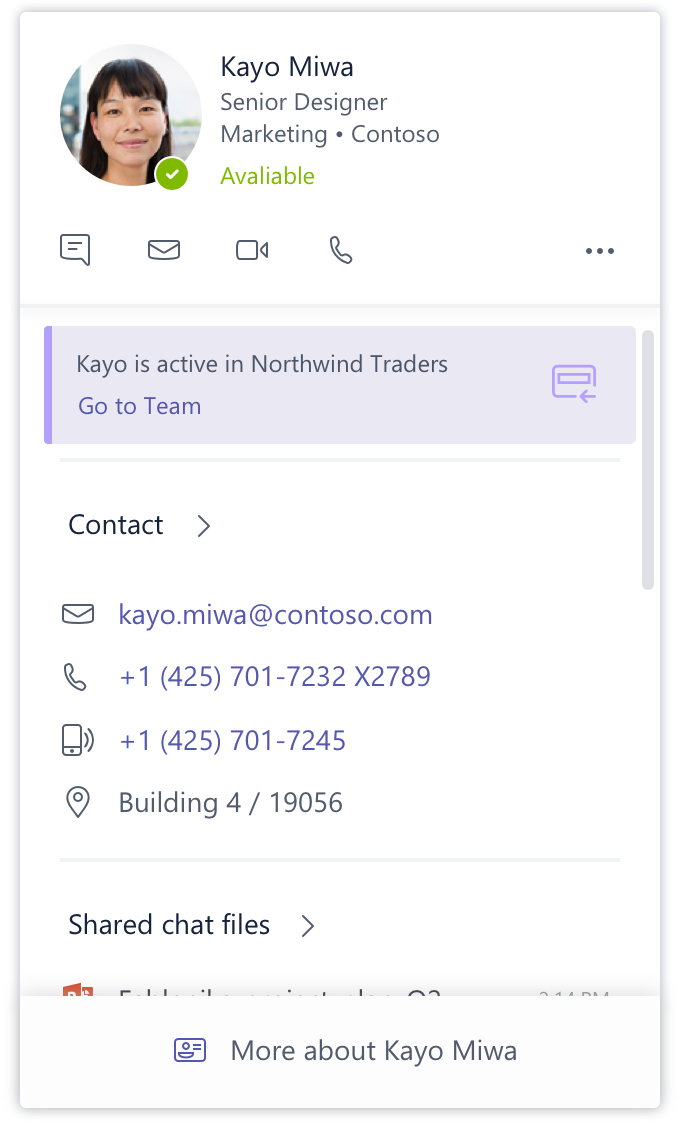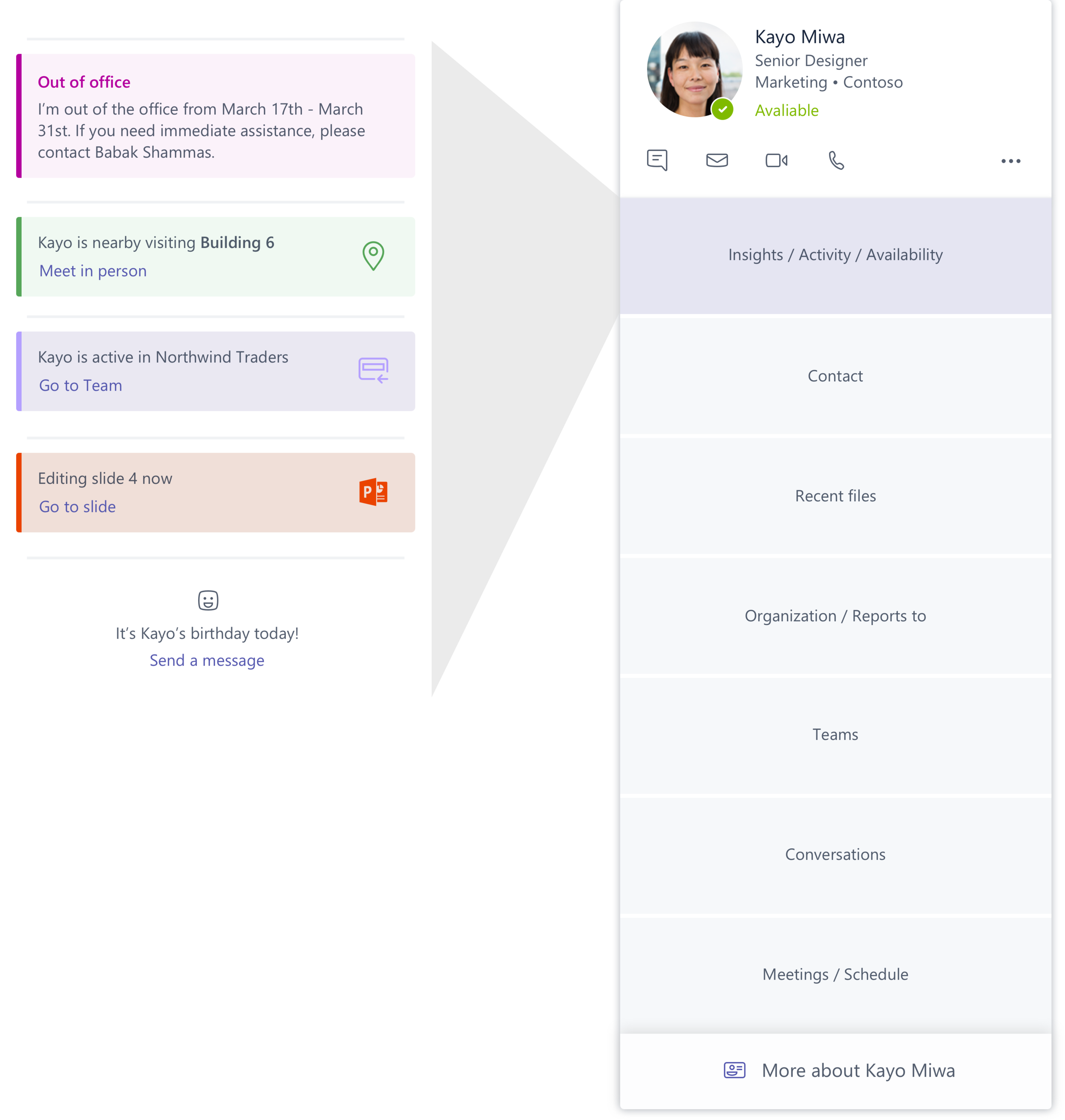Case study
The People Card
In it's initial release, the People Card in Microsoft Teams was a simple stagnate information panel with a profile summary and contact information. But, as well all know, people are so much more than that and for a product that was focused on team collaboration, it was important that our relationship with people feel extremely - personal.



























